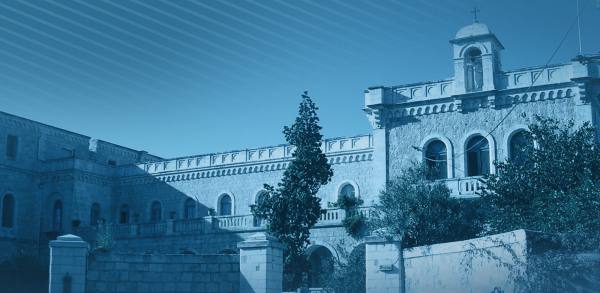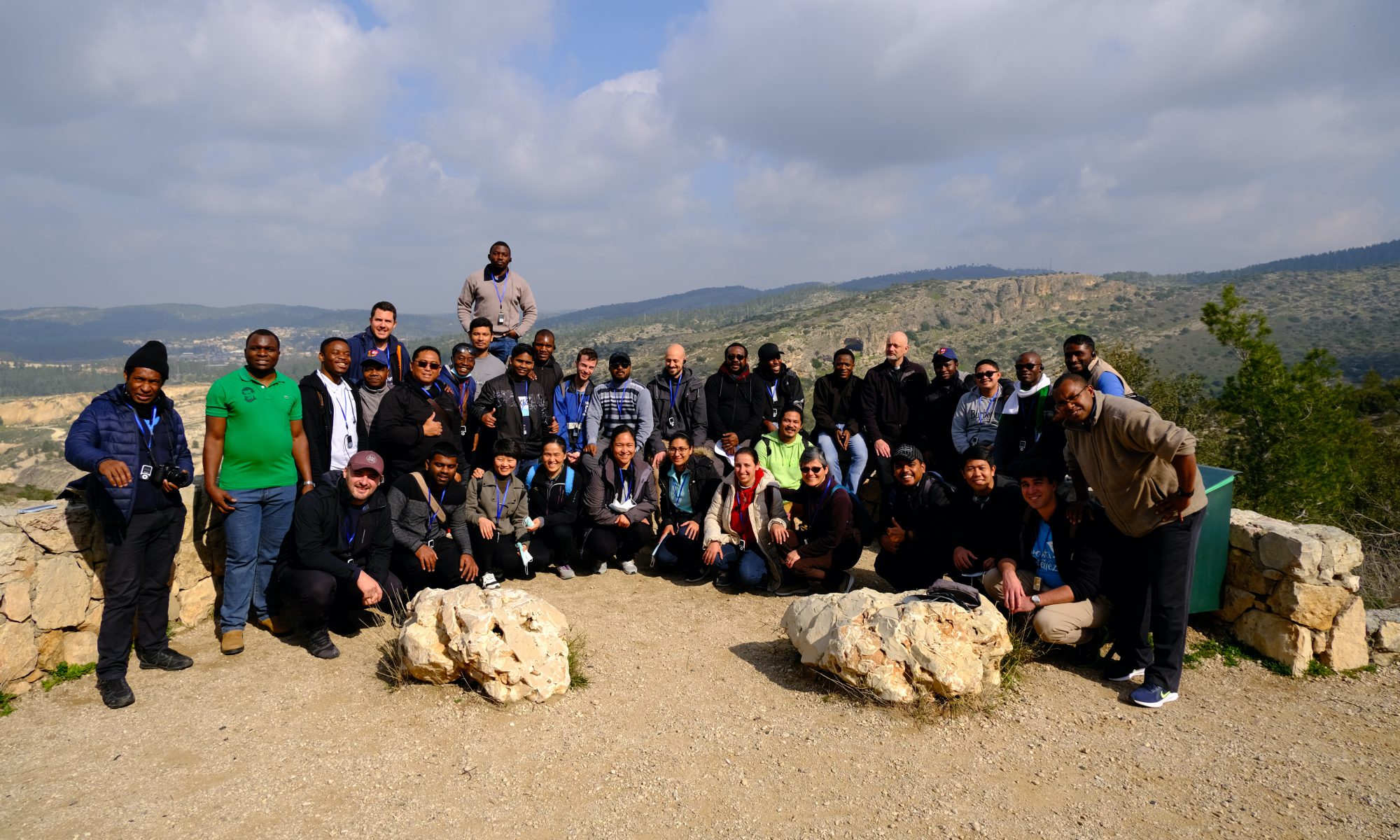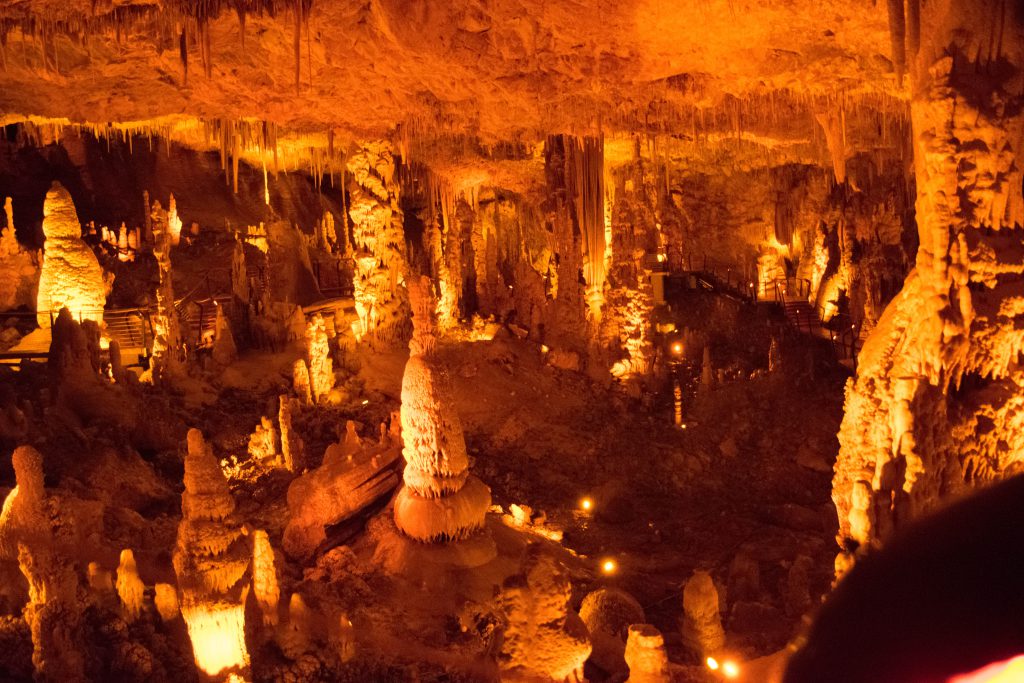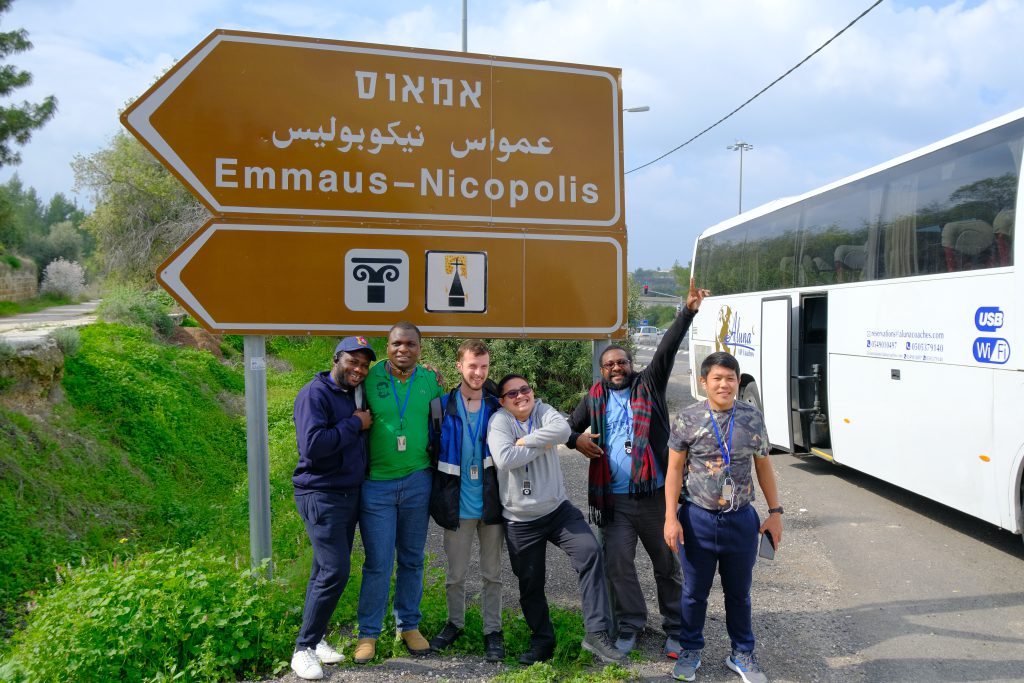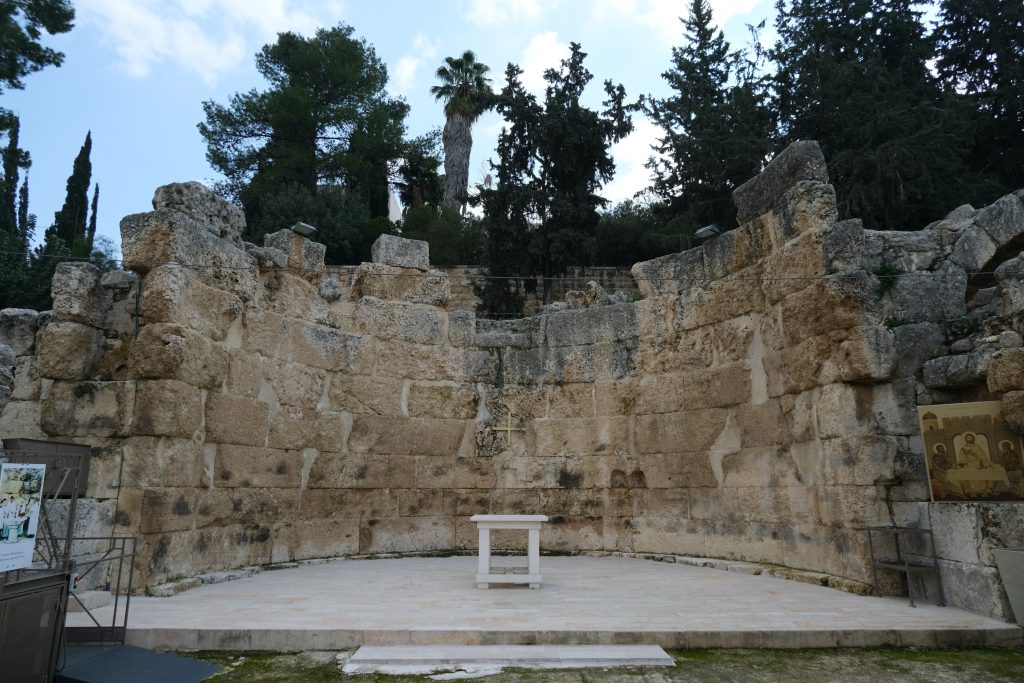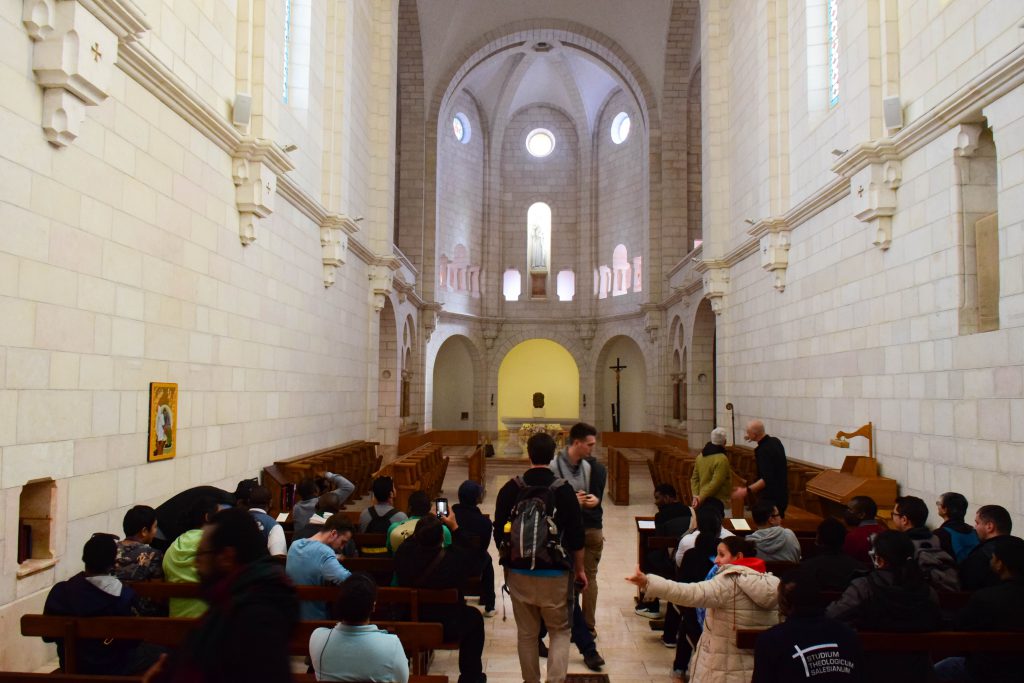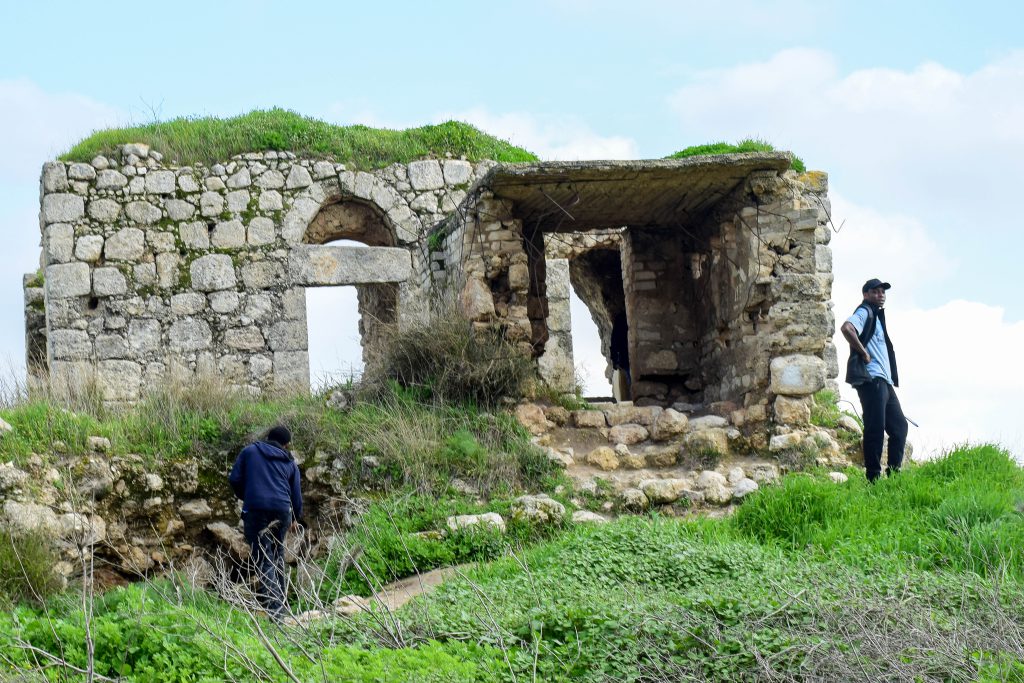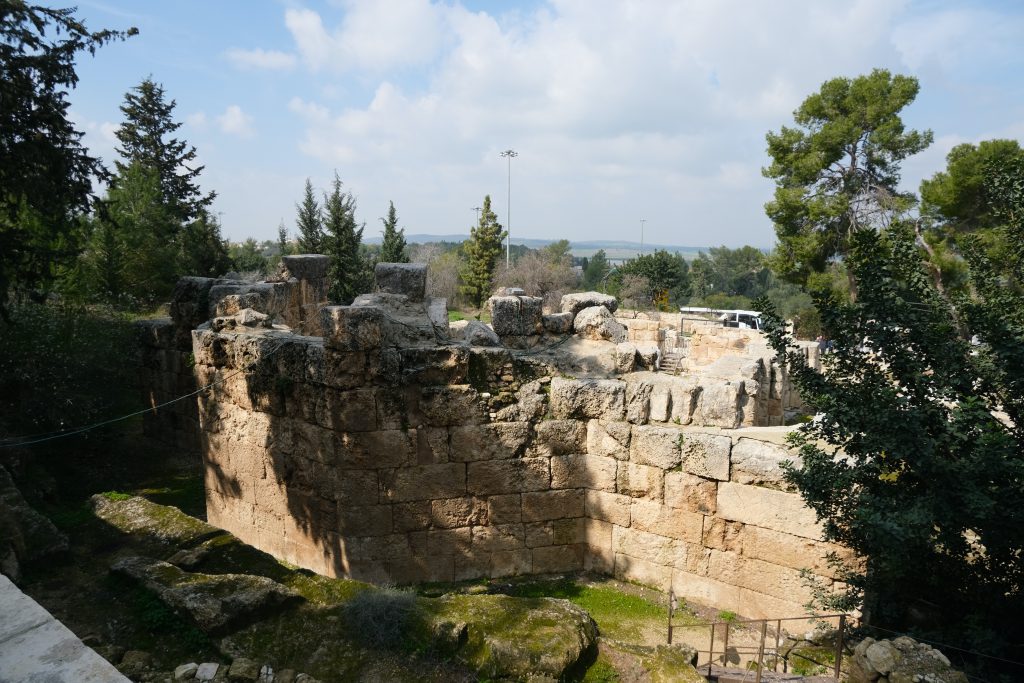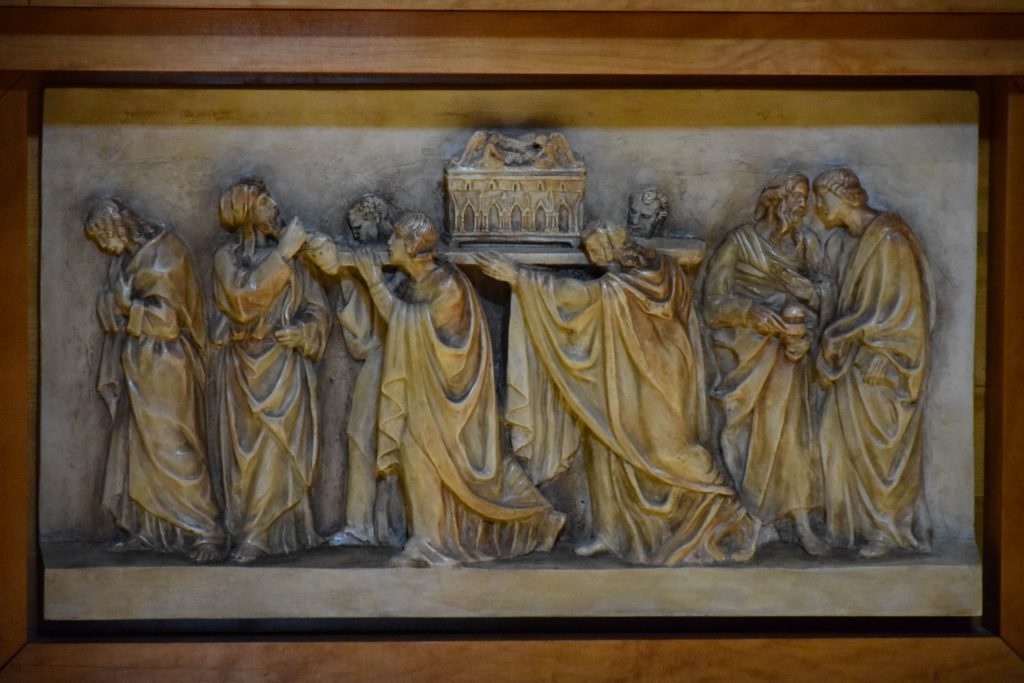At the beginning of the second semester our archaeological excursion, that took place on Monday the 21st February 2022, helped us discover some very important sites regarding our faith and the beauty of the nature near Jerusalem.
SOREQ CAVE: STALACTITES AND STALAGMITES
Our trip started with the peaceful and very pleasant visit of the Natural Reserve of Soreq, where we had the chance to visit the breath taking stalactite caves to be found there. The outside observation area, just after the access point, provides a view of the extent of the Natural Reserve and towards some parts of the Judea plain, where, among them, the city of Bet Shemesh is located. At the foot of the observation area, the quarry, whose work exposed the cave some decades ago, is to be seen. The explanatory video shown to us before entering the cave, gave us a general knowledge about the formation of the stalactites, as well as of the variety of shapes of the stalagmites that are illuminated in the cave by special artificial lights. Many stalactites and stalagmites, that accompany visitors all along the route, have namely particular forms. The most beautiful ones are the “pillar”, the “elephant’s ears”, and “Romeo and Juliette”, a stalactite and stalagmite that are almost, but not quite, kissing each other.
EMMAUS - NICOPOLIS
Hopping back on our bus, our trip headed towards Emmaus-Nicopolis, located approximately 30 km west of Jerusalem, on the border between the mountains of Judea and the valley of Ayalon. Emmaus existed as a village in Palestine until 1967 and due to its strategic position - told us by Brother Anthony, a religious belonging to the community of the Beatitudes - it played an important administrative, military and economic role in the region at certain points of its history. The first textual reference of Emmaus is found in the 1st Book of Maccabees and until today, the ruins of the old ancient basilica of the Byzantine period attestate the importance of this site for Christians. Among many scholars, and thanks to the discoveries of the last century, this place is considered to be the authentic Emmaus, where Jesus broke the bread with the two disciples, as narrated in the famous passage of the Gospel of Luke. In this significant place for our faith we had the chance also to share and challenge ourselves with the large themes of synodality that the current Synod in the Church is discussing.
LATRUN: THE TRAPPIST MONASTERY
Not far away from there, we were welcomed in Latrun Abbey, where one of its members warmly explained to us, the life of the abbey, as well as the fundamental principles of their spirituality. We took advantage of their lovely garden to enjoy our lunch, before visiting the centre of Saxum.
SAXUM
The Saxum Visitor’s Centre helped us deepen our knowledge of the Holy Land through different multimedia resources in order to enrich our experience of the Holy places and at the same time, enabled us to have a general overview on the different stages of Christianity over the centuries. Most appreciated were indeed the gentleness of the guide as well as the digital contents which gave us many good insights about our faith and the studies done until now.
ABU GOSH BENEDICTINE MONASTERY
Our trip ended in Abu Gosh, where we visited the church of the Benedictine abbey. Its beauty and simplicity is remarkable, as well as the presence of the Benedictine monks and nuns, who carry out a prophetic mission in this part of the Holy Land, namely the unity among believers. Their presence in the Muslim Israeli village of Abu Gosh fulfills the vision that places their community first of all within the mystery of salvation. In this place the Benedictines play an important role at the heart of the very diversity of this Land.
After this last visit we returned to our campus and, with the heart full of gratitude and beauty and the desire for the next archaeological excursion, indeed we can affirm that this was the best way to start the academic week.
Federico Schullern
21st February 2022
